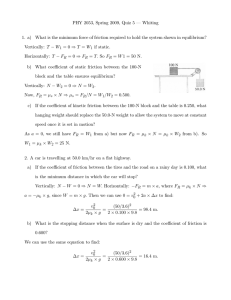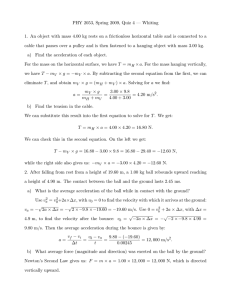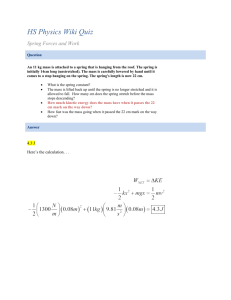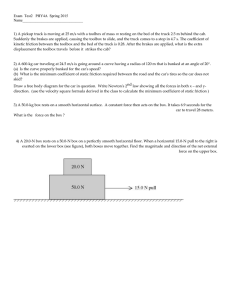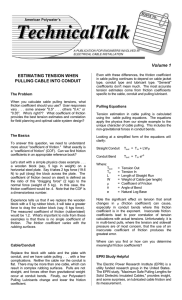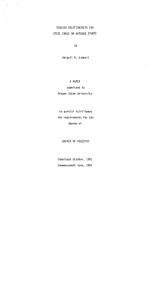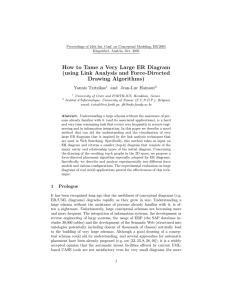PHY 2053, Section 3794, Fall 2009, Quiz 5 — Whiting
advertisement
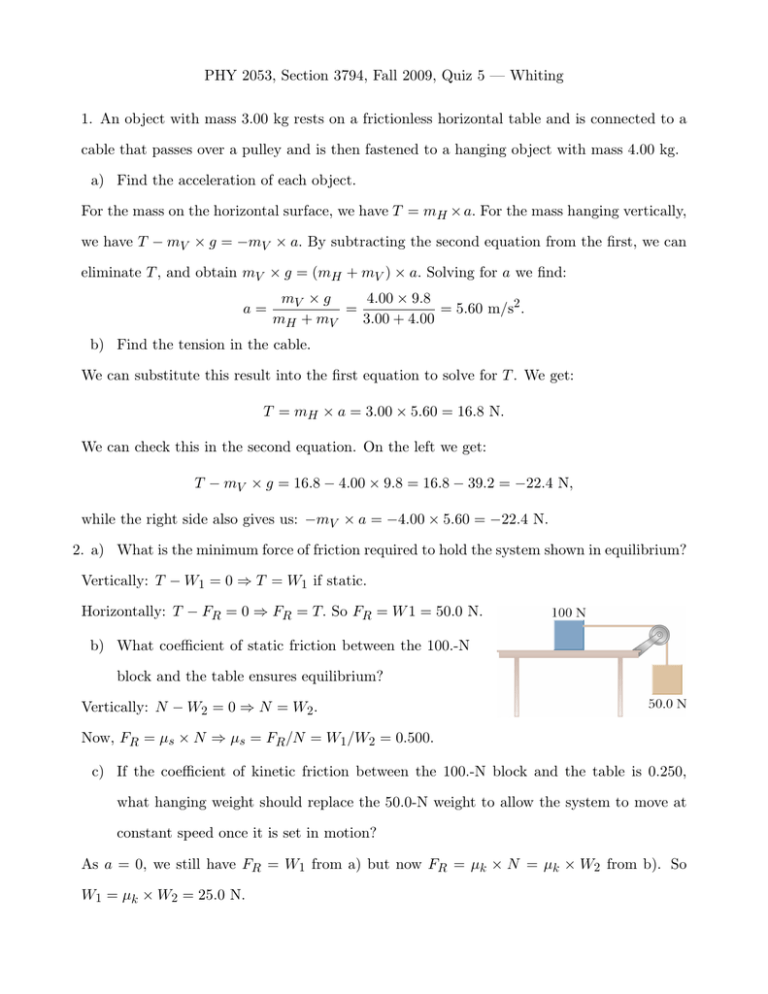
PHY 2053, Section 3794, Fall 2009, Quiz 5 — Whiting 1. An object with mass 3.00 kg rests on a frictionless horizontal table and is connected to a cable that passes over a pulley and is then fastened to a hanging object with mass 4.00 kg. a) Find the acceleration of each object. For the mass on the horizontal surface, we have T = mH × a. For the mass hanging vertically, we have T − mV × g = −mV × a. By subtracting the second equation from the first, we can eliminate T , and obtain mV × g = (mH + mV ) × a. Solving for a we find: a= mV × g 4.00 × 9.8 = = 5.60 m/s2 . mH + mV 3.00 + 4.00 b) Find the tension in the cable. We can substitute this result into the first equation to solve for T . We get: T = mH × a = 3.00 × 5.60 = 16.8 N. We can check this in the second equation. On the left we get: T − mV × g = 16.8 − 4.00 × 9.8 = 16.8 − 39.2 = −22.4 N, while the right side also gives us: −mV × a = −4.00 × 5.60 = −22.4 N. 2. a) What is the minimum force of friction required to hold the system shown in equilibrium? Vertically: T − W1 = 0 ⇒ T = W1 if static. Horizontally: T − FR = 0 ⇒ FR = T. So FR = W 1 = 50.0 N. b) What coefficient of static friction between the 100.-N block and the table ensures equilibrium? Vertically: N − W2 = 0 ⇒ N = W2 . Now, FR = µs × N ⇒ µs = FR /N = W1 /W2 = 0.500. c) If the coefficient of kinetic friction between the 100.-N block and the table is 0.250, what hanging weight should replace the 50.0-N weight to allow the system to move at constant speed once it is set in motion? As a = 0, we still have FR = W1 from a) but now FR = µk × N = µk × W2 from b). So W1 = µk × W2 = 25.0 N.
